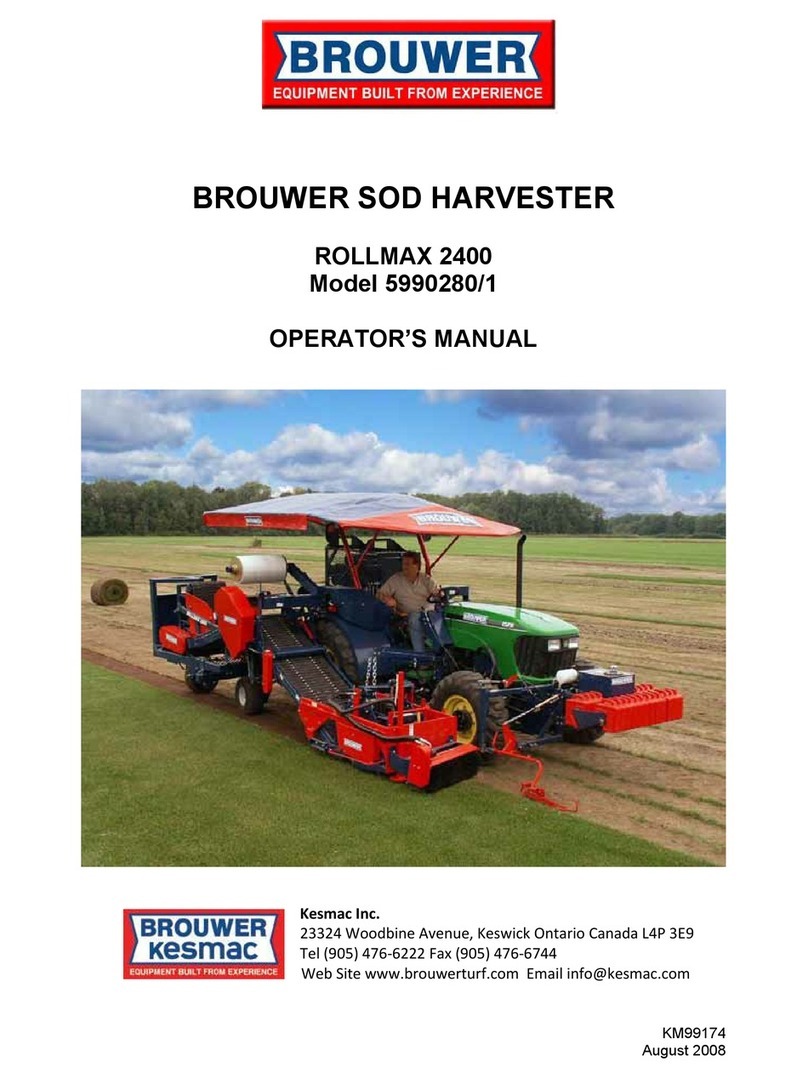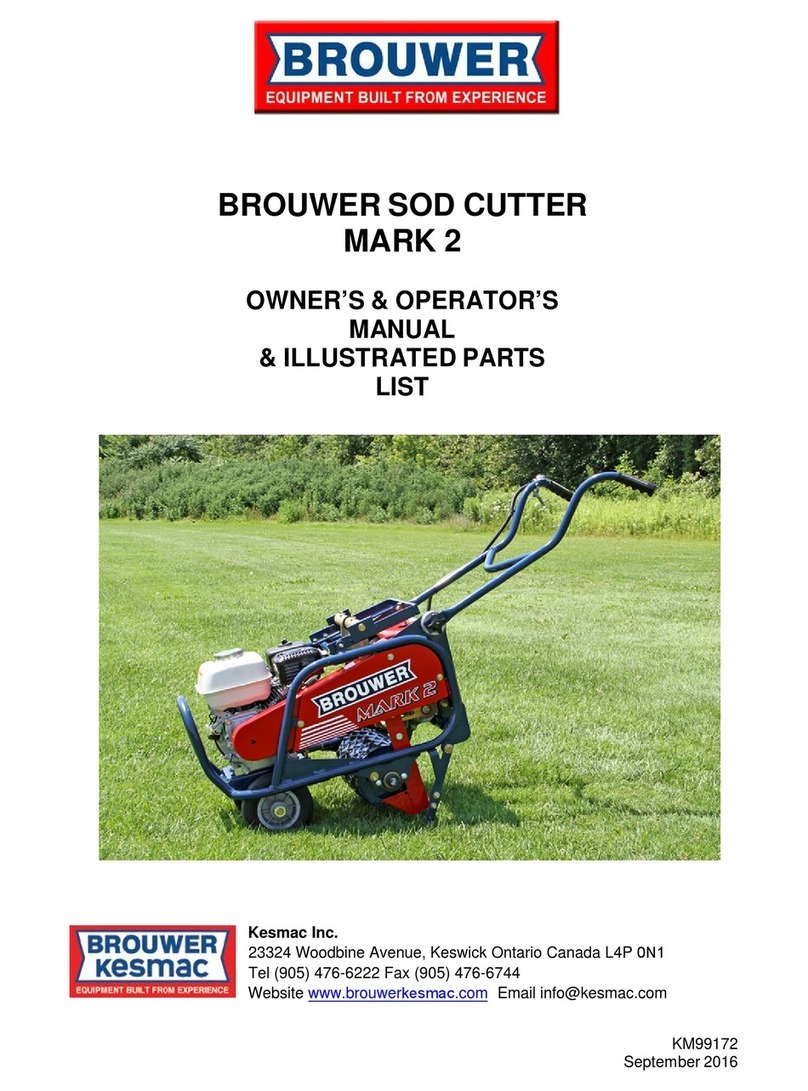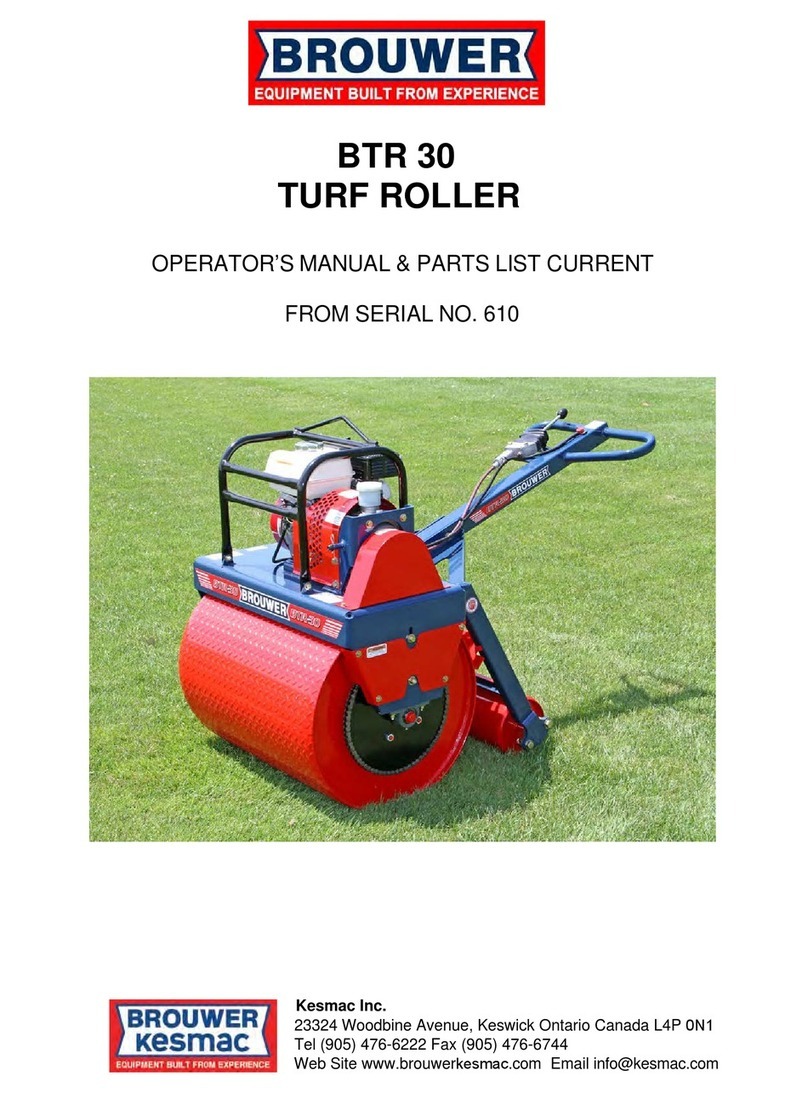
Safe Operation
Operator preparation and Training.
Read the RoboMax Operation and Safety Manual, and
also the tractor operating manual. They must be kept on
the machine at all times.
•If an operator or mechanic cannot read and
understand English, it is the owners respon-
sibility to explain the material contents to them.
•If any of the information or instructions in this
manual are not clear, contact your dealer or the
factory representative for clarification.
•Become familiar with the safe operation of the
machine, the operating controls and the safety
decals. If there are any questions concerning
safety, do not operate the machine until they are
clarified.
All safety guards and shields must be kept in
place and in good condition. All interlock switches
must be correctly adjusted.
•It is the owners responsibility to ensure that all
operators and service personnel are trained in
the proper operation and service procedures of
the machine.
•Wear appropriate work clothing, safety equipment
and work boots. Do not operate the machine with
loose clothing, long hair, or any jewelry, that may
get tangled in moving parts.
CAUTION
Wear suitable hearing protection such as
earmuffs or earplugs, to protect against hearing
impairment or hearing loss.
Operating equipment safely requires the full
attention of the operator. Do not wear radio or
music headphones while operating the machine.
•Never allow children or untrained persons to
operate this equipment. Local regulations may
restrict the age of the operator.
•Only the operator must be on the machine, never
allow riders on the machine. Riders can be
injured by foreign objects or can be thrown off the
machine. Also they may obstruct the ability of the
operator or the operators view resulting in unsafe
operation of the machine.
1-02
SAFETY
•The warning/safety decals must be kept clean,
legible, and undamaged. Do not operate the
machine if any decals are missing or damaged.
Obtain new decals from the factory.
•Do not operate the machine if drugs, alcohol or
medication are being used that can affect the
alertness or co-ordination of the operator.
Seek professional advice, before operating the
machine, if there is any doubt about the side
affects of any medication being taken that may
put your safety and that of others at risk.
•Keep animals and bystanders clear of the
machine, at a safe distance, when operating the
machine.
•The owner/operator is responsible for accidents
and/or injuries that may occur to themselves,
bystanders, or property that may occur as a result
of the operation of this machine.
Machine preparation
•Check the ‘operator presence’ interlock is
operating. Check tractor brake operation. Repair
or adjust any problem before operating the
machine.
•Do not tamper with or defeat safety devices.
Keep guards, shields and interlock safety devices
in place and in proper working condition. They
are for your protection.
•Check regularly that all fasteners, that is, nuts/
bolts, and retainer pins are secure.
•Check daily that the machine is in good working
condition. Check all tires for damage or excessive
wear.
•Use only accessories, attachments and
replacement parts that are approved by the
manufacturer.
WARNING
To prevent unauthorized persons having access
to the cab:
The cab door must be kept locked when in
service, and the key in possession of the
service person.
IF YOU DO NOT UNDERSTAND….ASK






























